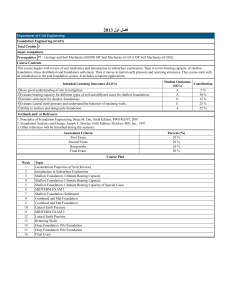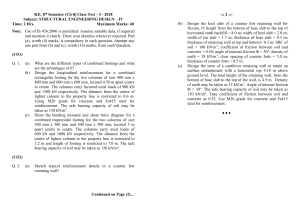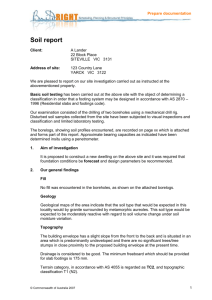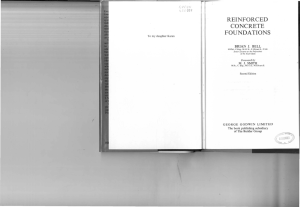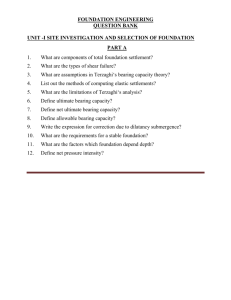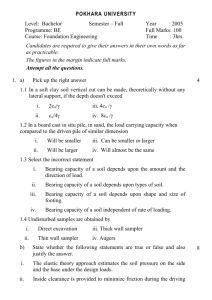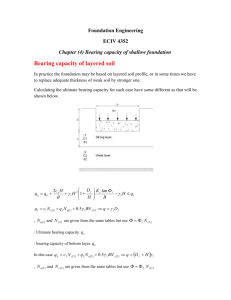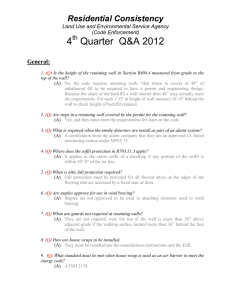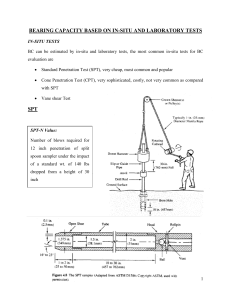B.E./B.Tech. DEGREE EXAMINATION, NOVEMBER/DECEMBER
advertisement
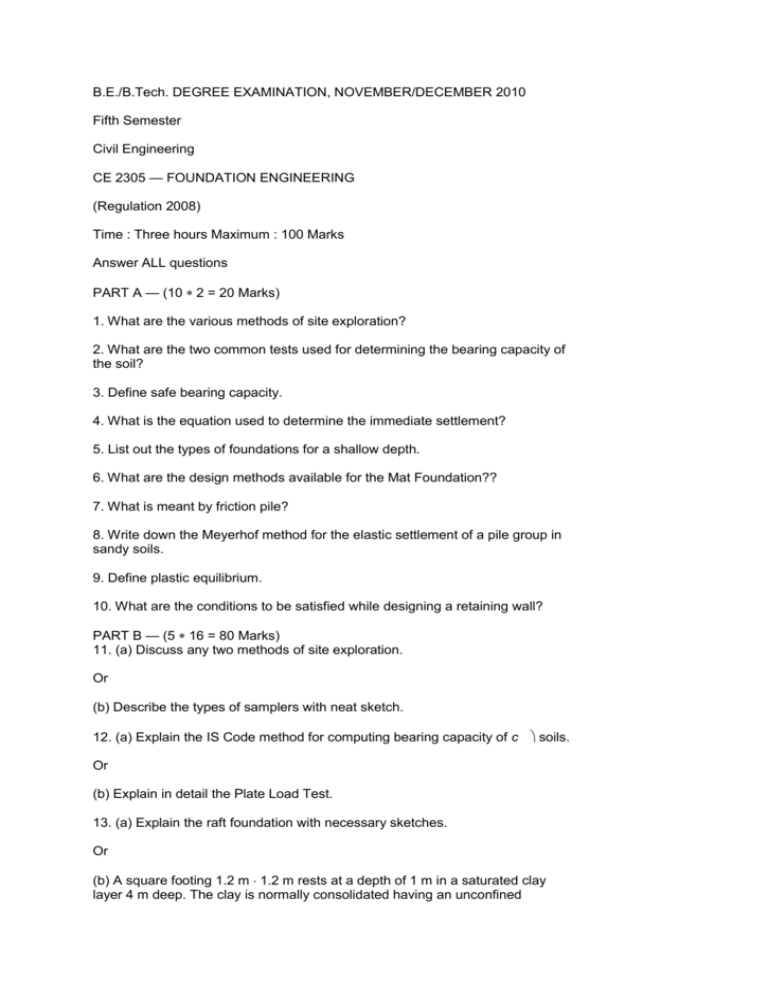
B.E./B.Tech. DEGREE EXAMINATION, NOVEMBER/DECEMBER 2010 Fifth Semester Civil Engineering CE 2305 — FOUNDATION ENGINEERING (Regulation 2008) Time : Three hours Maximum : 100 Marks Answer ALL questions PART A — (10 2 = 20 Marks) 1. What are the various methods of site exploration? 2. What are the two common tests used for determining the bearing capacity of the soil? 3. Define safe bearing capacity. 4. What is the equation used to determine the immediate settlement? 5. List out the types of foundations for a shallow depth. 6. What are the design methods available for the Mat Foundation?? 7. What is meant by friction pile? 8. Write down the Meyerhof method for the elastic settlement of a pile group in sandy soils. 9. Define plastic equilibrium. 10. What are the conditions to be satisfied while designing a retaining wall? PART B — (5 16 = 80 Marks) 11. (a) Discuss any two methods of site exploration. Or (b) Describe the types of samplers with neat sketch. 12. (a) Explain the IS Code method for computing bearing capacity of c soils. Or (b) Explain in detail the Plate Load Test. 13. (a) Explain the raft foundation with necessary sketches. Or (b) A square footing 1.2 m 1.2 m rests at a depth of 1 m in a saturated clay layer 4 m deep. The clay is normally consolidated having an unconfined compressive strength of 40kN/m2. The soil has a liquid limit of 30%, sat = 17.8kN/m3, W = 28% and G = 2.68. Determine the load which the footing can carry safely with a factor of safety of 3 against shear. Also, determine the settlement if the footing is loaded with this safe load. Use Terzaghi’s analysis for bearing capacity. 14. (a) Write a note on the classification of piles. Or (b) Explain the under-reamed pile foundation with neat sketch. 15. (a) A vertical excavation was made in a clay deposit having weight of 20 kN/m3. It caved in after the depth of digging reached 4m. Taking the angle of internal friction to be zero, calculate the value of cohesion. If the same clay is used as a backfill against a retaining wall, upto a height of 8 m, calculate (i) Total active earth pressure, (ii) Total passive earth pressure. Assume that the wall yields far enough to allow Rankine deformation conditions to establish. Or (b) A masonry retaining wall of trapezoidal section has its top width equal to 0.75 m and height 6m. Its face which is in contact with the retained earth is vertical. The earth retained is level at top. The soil weighs l6 kN/m3 and its angle of friction is 30. The masonry weighs 24 kN/m3. Determine the minimum width of the base to avoid tensile stresses and determine the maximum compressive stress for this base width. If the coefficient of friction between the base and the soil is 0.60 m, check the stability of the retaining wall against sliding.
